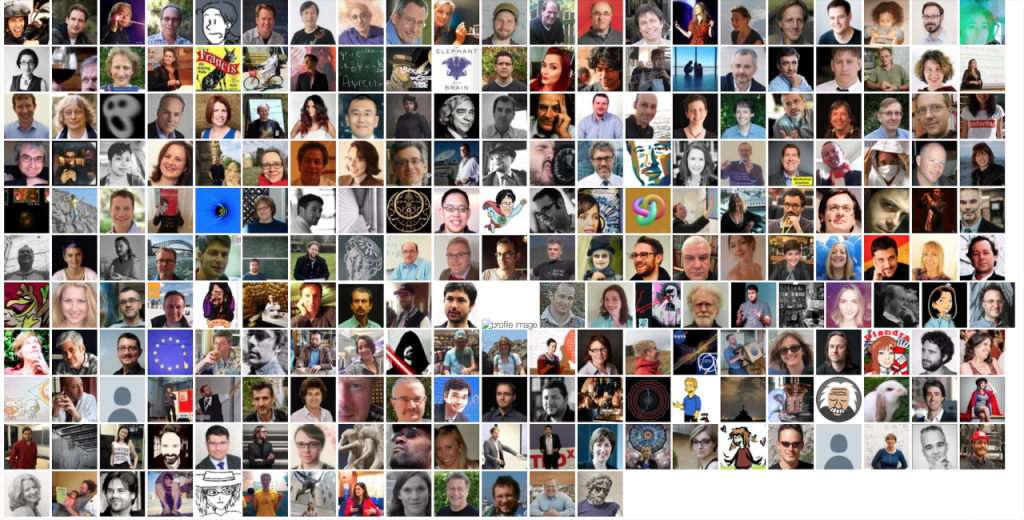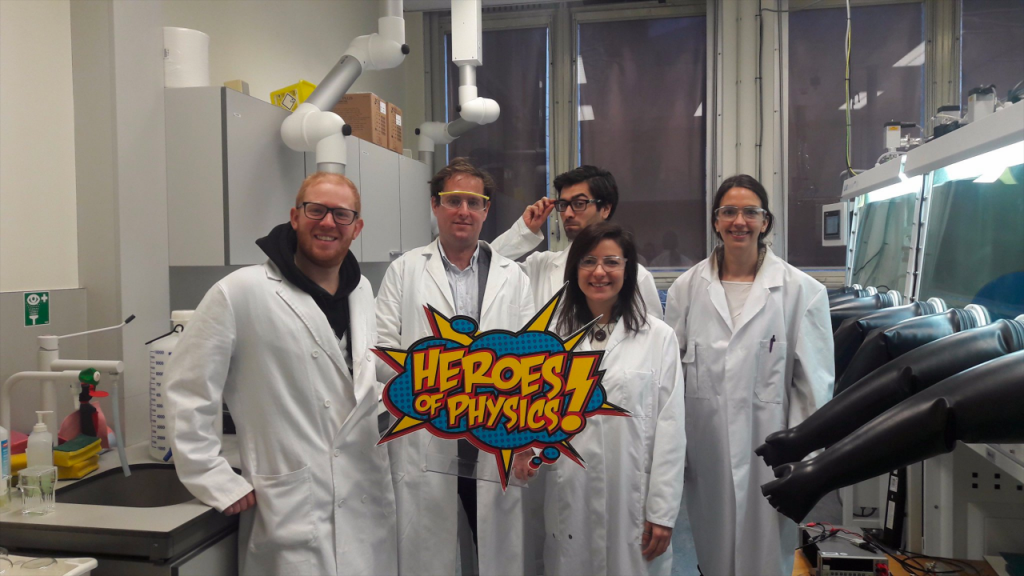This blog post was originally posted on Particle People (interactions)
Since 2016, Juan Rojo has been Assistant Professor of Theoretical Physics at the Vrije Universiteit (VU) Amsterdam and Staff member at the Theory group of Nikhef, the Dutch National Institute for Subatomic Physics. After getting his PhD in Barcelona in 2006, he was a postdoctoral researcher in Paris, Milan and at CERN, followed by a faculty position at the University of Oxford. Juan’s research interests are focused on the applications of Quantum Chromodynamics to the Large Hadron Collider (LHC) at CERN and on the exploitation of Machine Learning algorithms in High-Energy Physics. More information about Juan can be found on his website www.juanrojo.com and you can also find him on Twitter: @JuanRojoC.
Adventures and Misadventures in the Twittersphere
The usefulness (or lack thereof) of social media for science communications is a hotly debated topic among practicing scientists. This discussion has many facets, driven by reason or passion and ideology. Some of my colleagues seriously distrust all forms of science communications.They see the involvement of researchers in blogs and social media as either an inefficient procrastination (best-case scenario) or as an outrageous waste of time or money (at worst). Other people think instead that communicating science should be left to professionals (journalists, PR officers, scientists hired explicitly for this task) and that the actual scientists doing the research should not invest (waste?) time doing this.
Another challenge for those scientists that enjoy outreach and science popularization is that devoting the time required is no trivial thing. One problem is that academic incentives do not really facilitate science communication – only some university review committees would determine hiring or promotions based on social media presence or science communications activities.
Yet one more hurdle that scientists must overcome in order to become effective communicators is that science popularization is rather more difficult than one would expect. Being a good communicator, and not only in science, is benefitted by following an appropriate training that is seldom available for academics. The right way to deliver a message depends crucially on your audience: presenting a scientific publication to your peers at a technical conference is extremely different from presenting the same results to the general audience – the latter being by far much more challenging in my experience.
Despite these various complications, several scientists are very active in science communications in general and social media in particular. Some of them are very successful, have well-frequented blogs and even write popular science books. Interestingly, this creates a remarkable dichotomy in what makes a scientist ‘popular’. Traditionally, scientific popularity was measured using estimators such as the number of peer-reviewed publications, citation metrics, or invited talks at conferences. But in the social media era scientific popularity can also be measured by the number of Twitter followers, the number of Facebook likes, or traffic to your blog. These metrics have been sociologically studied and formulated into the Kardashian Index. It quantifies the popularity of a scientist as measured by their social media impact with respect to more traditional measurements of scientific impact, such as the number of citations of peer-reviewed publications. Scientists with a high Kardashian Index are considered more popular based on their blog posts or Twitter activity, rather than on the scientific papers they produce.
So, what is my take on this discussion?
I am convinced that science communications are an essential part of the scientific adventure. After all, if we investigate, how nature works at the highest energies and the smallest distances, it is important for us to tell everyone about it, and not to keep it a secret restricted to a select group of Illuminati. One of my university professors always said that making a scientific discovery is like when that girl that you are in love with finally accepts to go out with you – what you want is to tell everybody about it, to share the joy that something good has happened to you.
Within the large number of constraints that my position entails, I try to play an active role in science communications at various levels. One of the activities that I enjoy the most is going to schools to tell students about my research in high energy physics. I am always in awe of how incredibly interested these girls and boys are in things that might seem completely esoteric, such as dark matter or black holes. As I always tell them, if they are not excited now to learn about such cool topics like time dilation or quantum uncertainty, when will they be?
One of the criticisms that some people put forward against social media is that they are unsuitable for scientific discussions. Take for example Twitter: how can someone possibly sustain a good scientific argument restricted to 280 characters? Well, in my experience this is a deeply flawed assumption that disappears instantaneously once one starts to dive in the fascinating scientific Twittersphere. For example, I have recently witnessed very exciting and deep discussions on Twitter about a variety of scientific topics from gravitational effects on the muon properties to the dissection of the claim that the observation of a galaxy without dark matter killed a variety of modified theories of gravity beyond Einstein’s theory. Quite remarkably, these twitter arguments often reveal themselves more efficient in finding pitfalls and limitations of scientific studies than more traditional methods such as the peer review.
So, if you have ever wondered yourselves what can a scientist do on social media, then the answer is a surprisingly large and varied number of things! To begin with, they can communicate the passion for the scientific adventure – “science-ing” is not boring. It carries the fascination of a kid visiting a new theme park. Scientists can communicate their own results to the general public. They can discuss recent scientific news and developments, (including, of course, gossiping and rumor-spreading in the run-up to momentous announcements). Social media also allows scientists to engage with the interested public, bypassing all middlemen, with transparency and directness.
To give you an idea of the involvement of scientists in social media, the collage above collects the physicists with more than 1000 followers on Twitter, according to this survey. The list is topped by science superstars such as Brian Cox (with almost 3 million followers!), Lisa Randall, Katie Mack, or Robbert Dijkgraaf. The list also includes several of our Nikhef colleagues such as Gianfranco Bertone, Ivo van Vulpen, Tristan Du Pree, and yours truly.
As a great example of the proactive use of a social network for science communication is the recent initiative of NWO (the Dutch National Organisation for Scientific Research) to create the Heroes of Physics Twitter account. The idea is that this account is managed every week by a different scientist whose role it is to then present their everyday life, giving followers a feeling of how real scientists work. From my point of view, one of the main benefits of initiatives such as the Heroes of Physics is that they allow showcasing the wide variety of ways in which science can be done – as mentioned in my previous blog post, it is an extremely wrong idea that there is a unique “template” for a scientist. Whether you are a senior professor or a PhD student with two children, science is equally exciting, and social media efficiently communicates this. Another perk of holding this account is to be able to carry around a big cardboard logo of the initiative, which I can tell you works wonders as an icebreaker for the occasional conversation on the train.
So, I can hear you asking, what did I do during my own brief, albeit exciting, tenure as official Hero of Physics? Well, many things, including live broadcasting a staff meeting at the Vrije Universiteit of Amsterdam as well as the seasonal update from our Nikhef director, visiting many of the labs at the VU and learning about the great stuff my colleagues do there. From measuring the properties of molecules using lasers with insane precision to developing advanced biological imaging techniques for medical applications. And one of the best things of that week was for me to wear the traditional lab coat and safety goggles (which, to the disappointment of many, I seldom have the chance to wear). It was a nice opportunity to explain to the outside world a little bit about the great science that we do in Amsterdam. And as a curious anecdote, we were all very excited when, towards the end of that week, Andre Kuipers started following our Twitter account – Andre being a prominent public figure in the Netherlands, the second ever Dutch citizen to go to space!
It is a horrible idea to think that all scientists should also be science communicators. Some people enjoy doing this and are very good at it, whilst some others would do a terrible job, and this is perfectly fine. People are people and have their strengths. Your ability to communicate science does not really say anything about your value as a scientist or researcher. So, if you enjoy science communication, keep doing it! If you’d rather focus on your research, dive in! They’re all part of the scientific adventure.

